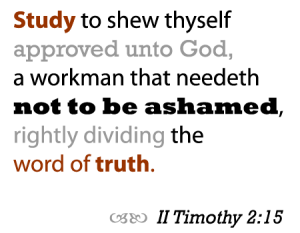Some men who claim to have read the original KJV of 1611 several times through and ‘believe the KJV’ have fallen for the slick trick of Bible correction: Acceptance of the ‘Greek’ text as authority over English.
There is an argument based upon ‘the Greek’ (whatever that means) that there were 4 men crucified with Jesus at Calvary. However, the English of the KJB states only 2 malefactors, also called thieves (transgressors) were crucified at the same place.
- Bullinger (1800s UK who was not a KJB believer) in appendix 165 of his Companion Bible bases the ‘proof’ of four crosses (plus Jesus’ cross) on the Greek text. He also has a picture of “The Five Crosses at Ploubezere in Brittany” as “possible” proof. The picture proves nothing except there is no new thing under the sun, and that Greek ‘professors’ have been around a long time; the picture is totally unrelated to the argument. Bullinger’s Greek argument may possibly be one of the first and is at least an example of all criticism of the KJB on the subject.
The supposed proof is that two “malefactors” (Grk: kakourgoi) were initially crucified with Jesus. Later, supposedly, two “thieves” (Grk: lestai) were also crucified, making a malefactor on the left , a malefactor on the right, and the two thieves were later crucified on the outside of the two malefactors. (The Greek argument reminds me of Johnny Cash’s song lyrics: “…And, the man in the middle was a Methodist”.)
The argument centers around the Greek words (kakourgoi and lestai). Greek fans argue that they mean two totally different classes instead of Greek synonyms. And, ‘the Greek’ word for “then” (Grk: tote) in Matthew 27:38 must mean after the two malefactors were crucified. Therefore, there must be 4 persons crucified on Golgatha with Jesus.
The view also finds it incredulous that the legs of only two would be broken before they approached Jesus. Here is the argument: “Had there been only two (one on either side) the soldiers would not have come to the Lord, but would have passed Him and then turned back again.” (Bullinger)
My answer:
- The King James Bible in English totally disagrees. Context of usage is always the determinate factor in translating from one language to another—not dependence solely in the source vocabulary or grammar rules. In English, is not a “robber” also a “thief” and are not both “malefactors”. And, does not the term “transgressors” cover “robber” “thief” and “malefactor”? Does it not carry the same meaning as to be “numbered with the transgressors”? (Mark 15:27) Transgressors is Greek “anomos”: someone against the law. Purposely, Mark 15:28 connects the prophecy with Mark 15:27 and Isaiah 53:12. Mark’s gospel is the only one that mentions the prophecy. The omissions do not mean the other 3 gospel writers disagreed with the prophecy statement.
- “Then” (Grk: tote) does not mean ONLY “after”, it may also be translated “at which”.
- The 4 inspired gospel accounts are not intended to be totally in line with each other as to time and event chronology. Each gospel has a different and primary objective: to present four accounts of the Lord Jesus’ earthly ministry. Basically, these were: Matthew as King, Mark, as Servant; Luke, as Man; John, as God. All four views pictured Jesus in His earthly ministry. This purpose of the gospel accounts take precedent over a precise, chronological coordination of events and terms.
- As to order of “breaking legs”, Jesus was the main figure at Calvary. All events leading up to the trial and crucifixion of Jesus were the focus of the gospel writers, other persons were secondary or not even mentioned. The transgressors’ trials were not recorded. Why should the soldiers have not waited to see His condition before all others? This was also a fulfillment of scripture prophecy. (John 19:36; Ex 12:36) The number of soldiers is plural. The text does not say how many soldiers.
- There are four different accounts of the superscription on the cross. ALL of them are different as to content. Does that mean there were four separate writings on the cross? Following the reasoning of the two malefactors plus two thieves argument—it would be the same faulty argument.
- To verify ‘the Greek’ proof, critics of the KJB accuse artists and “tradition” and, of course the Roman Catholic Church. The RCC is guilty of much error but this error is in the KJB critics placing authority in Greek lexicons and discounting the KJB translators as children.
 Evidently not all RCC believe in the “5 cross” guesswork. This is a 2020 website picture from the RCC Diocese of Raleigh NC.
Evidently not all RCC believe in the “5 cross” guesswork. This is a 2020 website picture from the RCC Diocese of Raleigh NC.
7. The most important thing about Calvary is not whether there were 3, 4, 6, or 8 crucified. Only ONE paid for all sins.
Rom 5:8 But God commendeth his love toward us, in that, while we were yet sinners, Christ died for us.
Rom 5:9 Much more then, being now justified by his blood, we shall be saved from wrath through him.
Rom 5:10 For if, when we were enemies, we were reconciled to God by the death of his Son, much more, being reconciled, we shall be saved by his life.
Rom 5:11 And not only so, but we also joy in God through our Lord Jesus Christ, by whom we have now received the atonement.
 Evidently not all RCC believe in the “5 cross” guesswork. This is a 2020 website picture from the RCC Diocese of Raleigh NC.
Evidently not all RCC believe in the “5 cross” guesswork. This is a 2020 website picture from the RCC Diocese of Raleigh NC.
